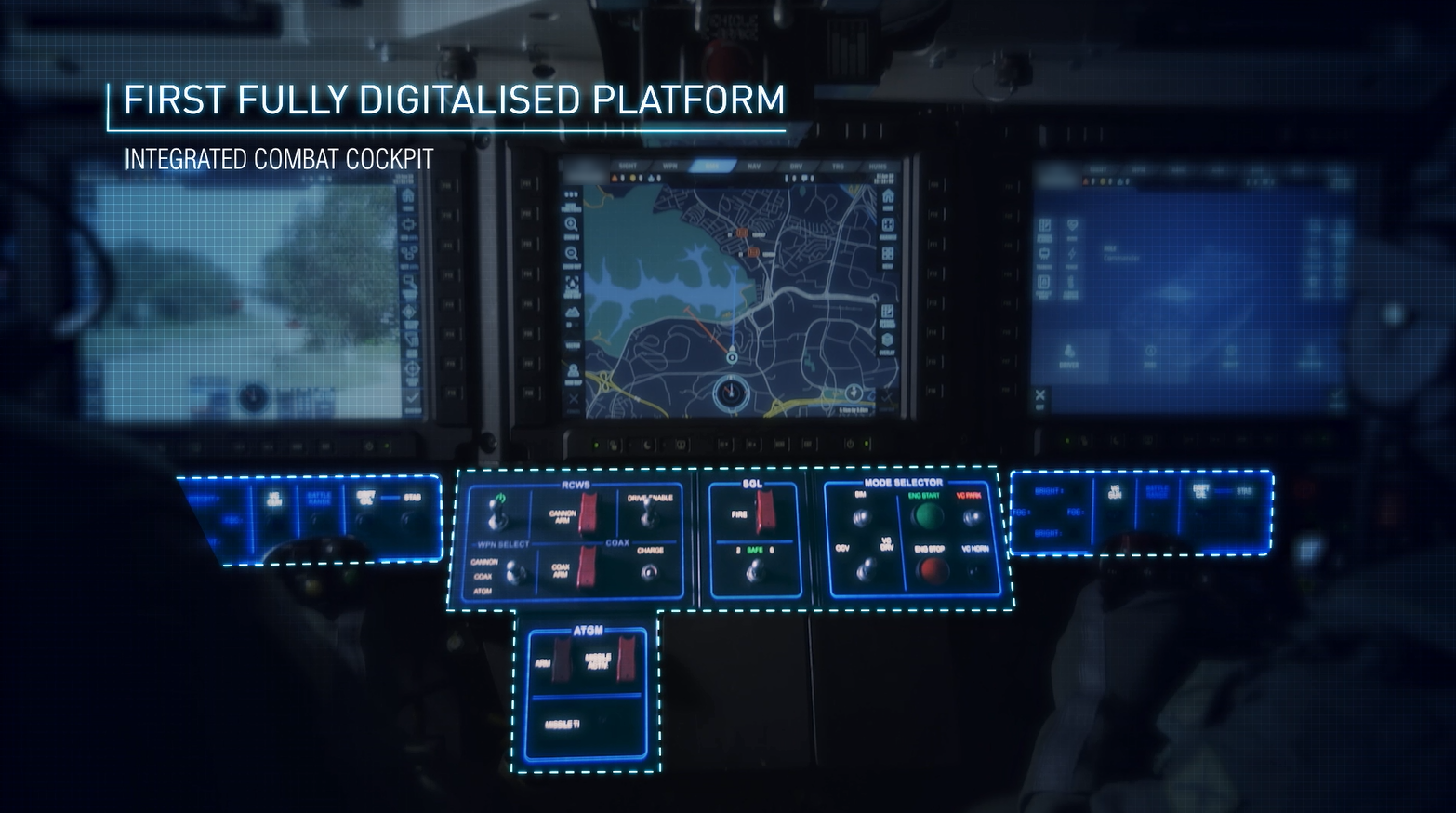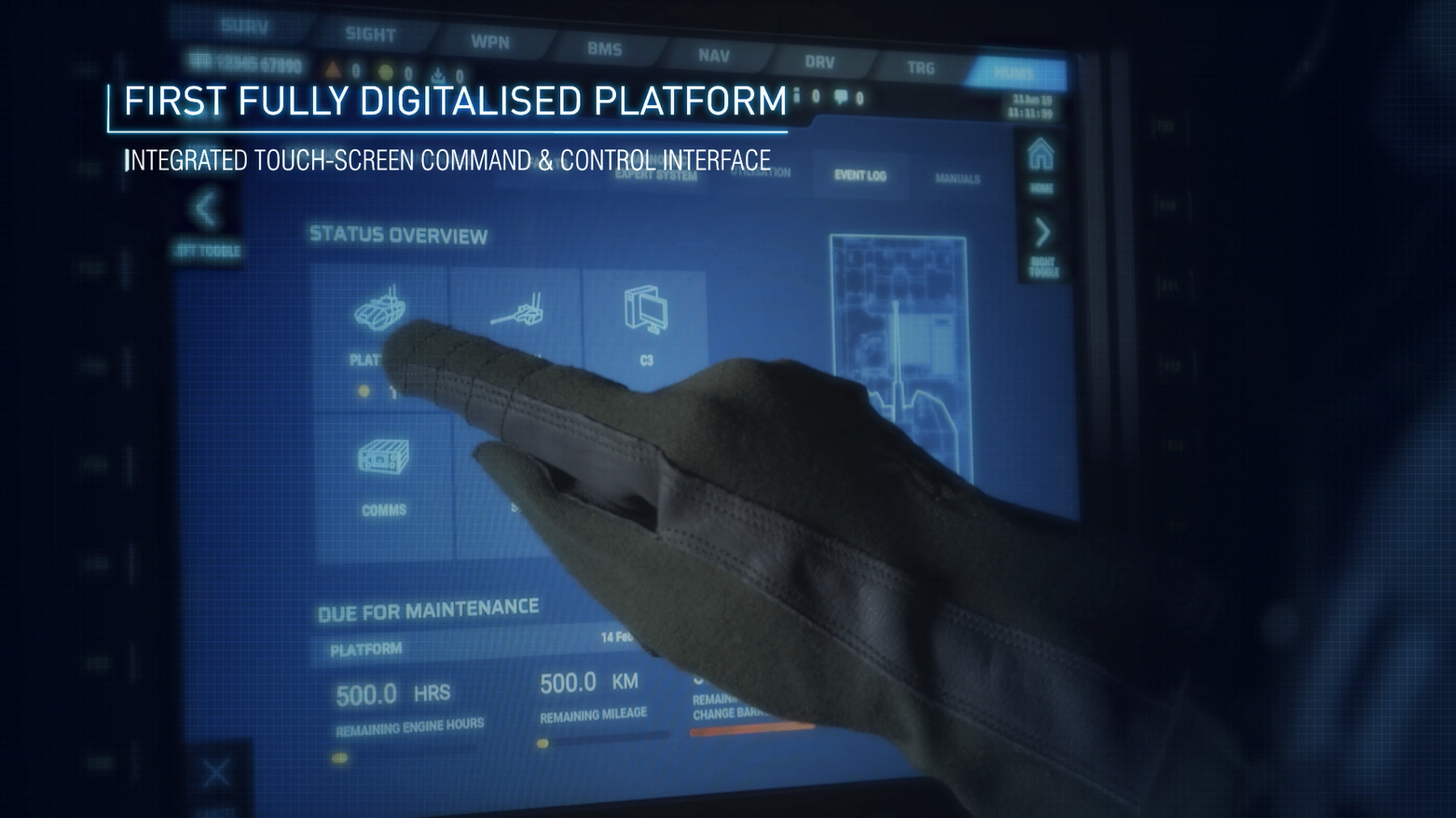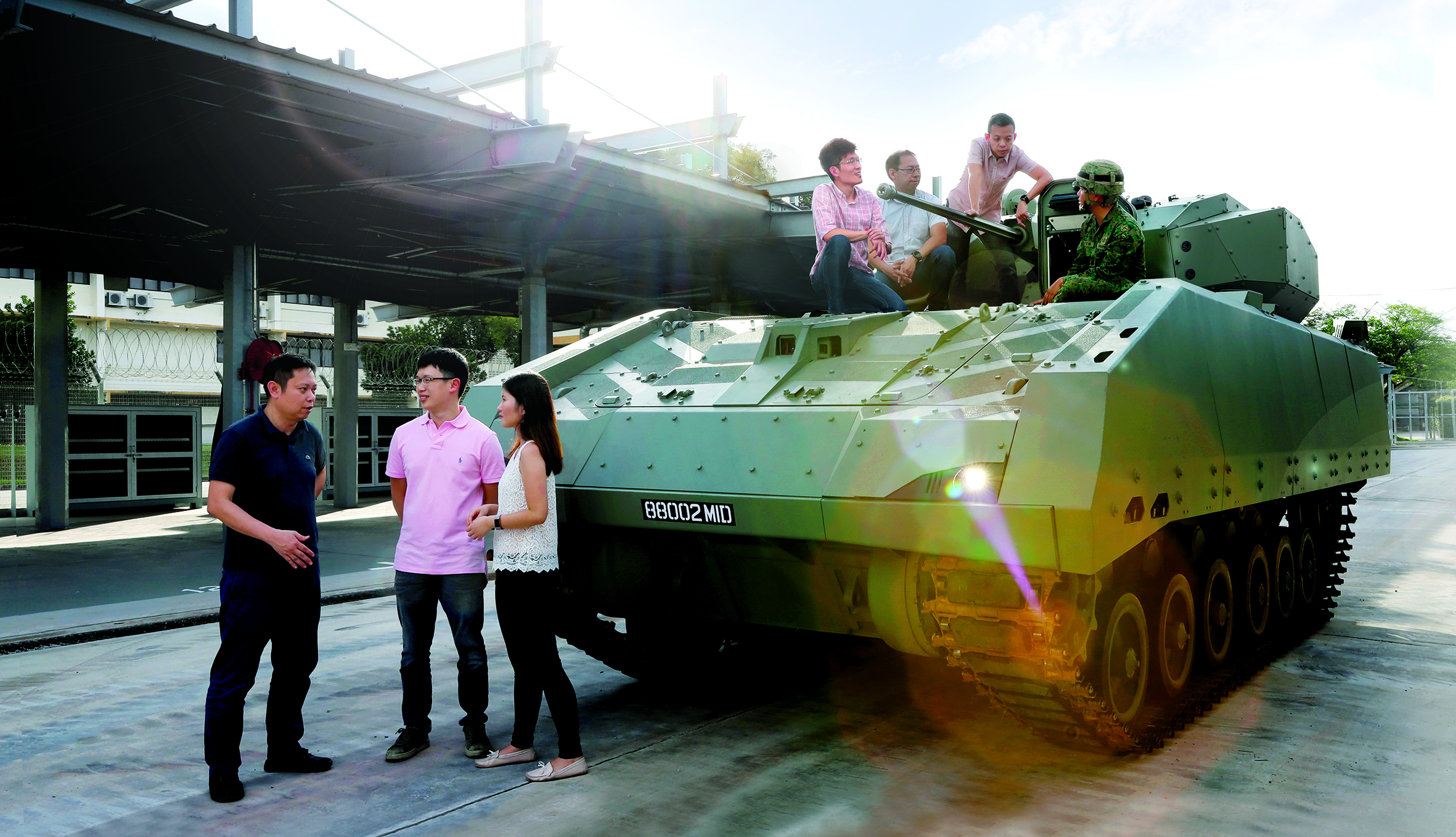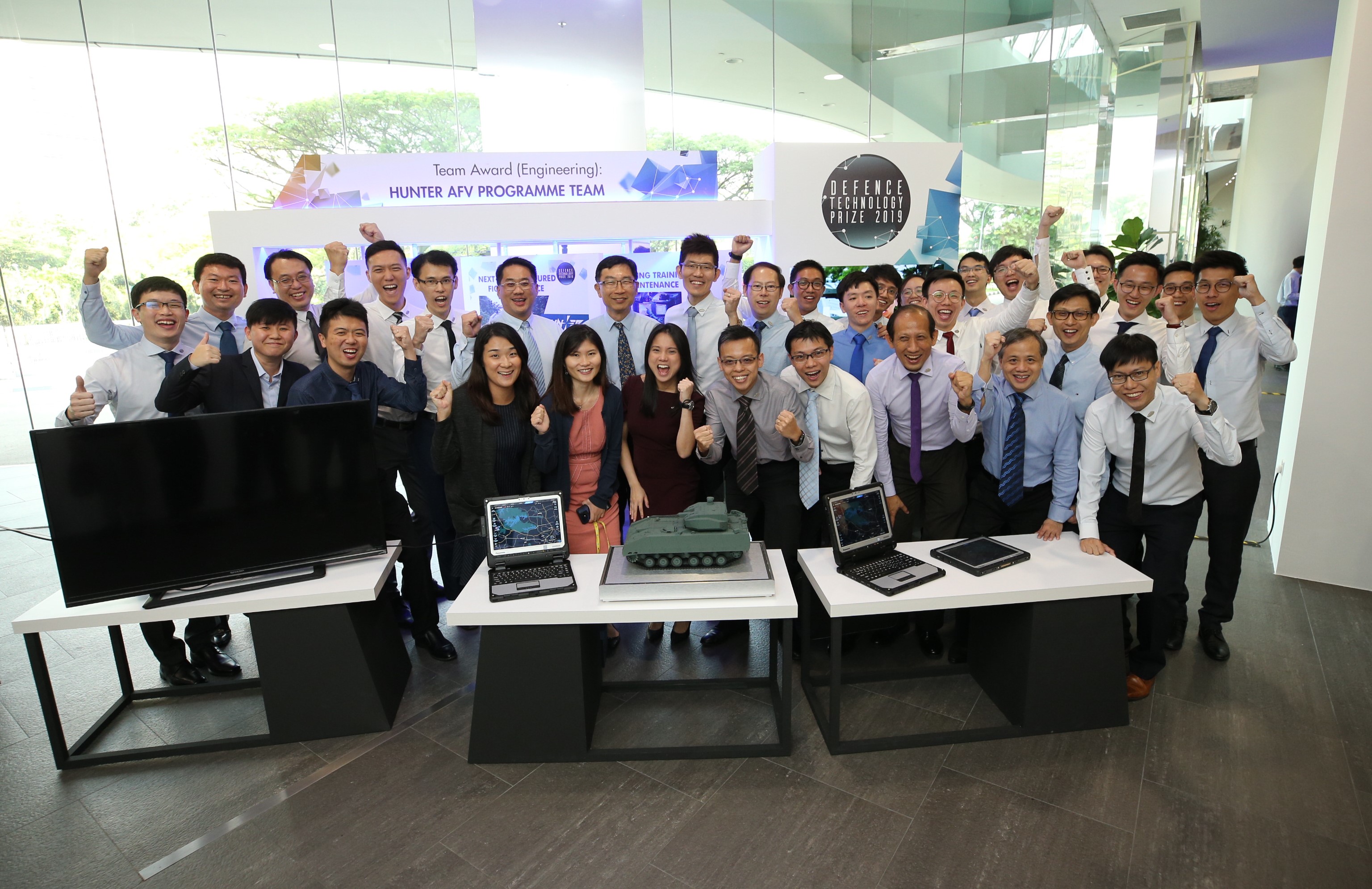Hunter on the Prowl
To many, a hunter may simply be someone who hunts. But if you ask a military tech buff like us, we think immediately of the Hunter Armoured Fighting Vehicle (AFV)!
As Singapore’s first fully digitalised AFV, the Hunter AFV replaces the Ultra M113 Armoured Personnel Carrier. It provides greater firepower, superior protection, increased mobility and expanded situation awareness to enhance operational capabilities and networked warfighting capabilities. It was designed and developed by our multidisciplinary team in collaboration with the Singapore Army and defence industry partners, both local and international.
To deliver a vehicle that would be intuitive to use, train and maintain, the team adopted a model-based system engineering approach. This enabled better visualisation and engineering analysis during design and technical reviews, without the need for costly and time-consuming physical prototypes. The team also used 3D modelling extensively throughout the development process, a first for the Singapore Army.
Senior Programme Manager (Land Systems) Wong Ying Tat shared: “It was a challenge to integrate best-of-breed subsystems into a tight footprint while optimising the overall performance. For example, the Hunter’s suspension systems, engines, transmissions, and running gears are all from different countries. We had to collaborate very closely with our partners, and utilise our engineering expertise to enhance computer-aided design models and engineering simulations throughout the digital design workflow to ensure that the integrated system would come together in the way we envisioned.”
Inside the cockpit, the vehicle commander and the gunner operate the vehicle and access mission data collaboratively through touchscreens powered by the Army Tactical Engagement Information System (ARTEMIS). Essentially the vehicle’s brain, ARTEMIS leverages video analytics and artificial intelligence to enhance the Hunter’s warfighting capabilities.


Beyond managing the development of the ARTEMIS for optimised technological prowess, our engineers also ensured that the system’s design was easy to use.
Senior Engineer (Land Systems) Marissa Ang explained that design innovation principles were applied throughout its development. She said: “Our work touches full-time National Servicemen and NSmen from all walks of life, so we need to give the Hunter an intuitive and user-centric user interface. We walked the ground to understand our users’ needs and distilled first-hand insights into ways to improve their workflow. For instance, we employed heuristics such as the ‘three-click rule’ during the software development process to make sure that all cockpit functions could be accessed within three clicks to optimise efficiency in an environment where every second counts.”

The Hunter AFV made its public debut as the centrepiece of the next-generation Army during the mobile column at National Day Parade 2019. As Senior Programme Manager (Land Systems) Yee Shun Cheng, who integrated the vehicle’s combat systems, reminisced: “I saw many people stopping to take photos with the Hunter, and noticed my colleagues sharing passionately about the Hunter’s capabilities with keen members of the public. There was a strong sense of pride in everyone knowing that we were contributing to our nation’s defence.”
The team’s good work has also been recognised with various awards such as the Defence Technology Prize in 2019 – the highest accolade from MINDEF for outstanding contributions in defence science and technology – and the IES Prestigious Engineering Achievement Award 2020.

With the Hunter AFV in active service with the Singapore Army, the team continues to push boundaries and look for new capabilities and technologies to improve and hone the system’s operational and technological edge. Their aim is to ensure that the Hunter AFV remains potent, and highly capable of answering any threat in today’s dynamic landscape.
“We are passionately invested and dedicated to what we do. The tech landscape is moving fast, and we constantly seek enhancements and upgrades together with our partners in the SAF and the industry to ensure our systems are among the best in the world,” said Programme Director (Land Systems) Dominic Li.
